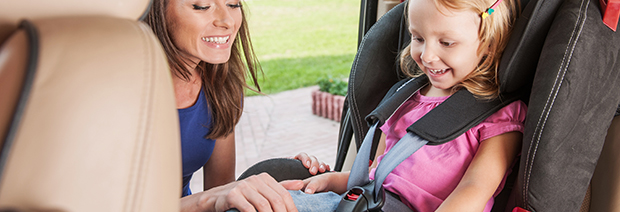Are you 100% confident that your child is the safest they can be while riding in the car? With car crashes being a leading cause of death for children 1 to 13 years old in the United States, it’s very important to make sure your child is in the correct safety seat to accommodate their growing body. But it’s not an easy task to find the right car seat. After all, there are several types of seats depending on your child’s age and size.

Ensuring your children are buckled in safely when they are in the car is the goal of National Child Passenger Safety Week. From September 14th -20th parents and caregivers are encouraged to participate in a safety seat check up and find out from experts how best to protect their kids. Even after you find the right one, it’s important to know how to install your car seat correctly and when to transition your child to another type of seat as they grow older. A National Highway Traffic Safety Administration study revealed that nearly 75 percent of parents don’t know how to use child safety restraints properly.
National Child Passenger Safety Week concludes with National Seat Check Saturday on September 20th when certified Child Passenger Safety Technicians will be available throughout California to offer advice and instruction. Technicians will help educate consumers about choosing the right car seat for their child, the importance of registering car seats with the manufacturer, and what to expect should that seat be subject to a safety recall. To find a safety seat check event in your area, visit seatcheck.org.
California law requires that all children under age 8 must be properly buckled into a car seat or booster in the back seat. Once a child reaches 8 years of age, parents should use this simple 5-step test to determine if their child can safely ride in a seat belt.
5-Step Test:
Step 1. Can the child sit all the way back against the auto seat?
Step 2. Do the child’s knees bend naturally over the seat cushion edge?
Step 3. Does the lap belt cross the top of the hips/thighs, not the tummy?
Step 4. Is the shoulder belt centered on the shoulder and chest?
Step 5. Can the child stay seated in this position for the whole trip?


